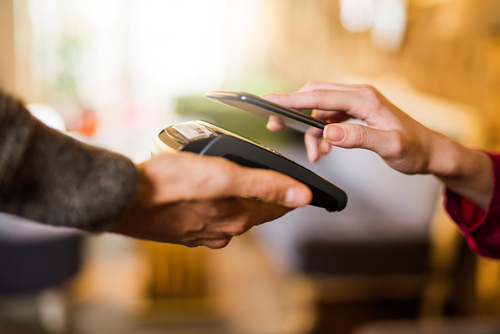La pandémie a accéléré l’essor des paiements numériques
Pour réduire le risque de transmission du virus SARS-CoV-2, les consommateurs se sont massivement tournés, depuis le début de la pandémie de Covid-19, vers les paiements sans contact. Le délaissement des espèces a également profité au paiement mobile.
Dans les pays nordiques, notamment le Danemark, la Norvège et la Suède, le taux d’adoption du paiement mobile est le plus élevé d’Europe, avec 40 % pour le Danemark, 25 % pour la Norvège et 36 % pour la Suède. Au Royaume-Uni, les espèces ont perdu la bataille contre les paiements par carte dans les magasins bien avant le début de la pandémie, les seconds ayant devancé les premiers dès 2017.
Quelle que soit la vitesse d’adoption des paiements numériques, la digitalisation progresse partout en Europe, boostée par la pandémie. De leur côté, les commerçants se sont également massivement équipés en terminaux de paiement pour être à même de répondre aux nouvelles habitudes des consommateurs.
Les grands acteurs européens du paiement numérique boostés par le contexte sanitaire
L’essor de la digitalisation des paiements profite aux grands acteurs européens du paiement numérique, qui ont enregistré d’excellents résultats au 1er semestre.
Ainsi, la fintech néerlandaise Adyen a vu ses revenus nets progresser de 46 % en un an, ceux-ci atteignant 445 millions d’euros. Le volume de paiements a augmenté de 67 %, passant de 129 milliards d’euros à 216 milliards d’euros, alors que sa hausse avait été plus limitée l’année d’avant, plafonnant à 23 %.
Le montant des transactions en magasin gérées par Adyen a doublé en un an, notamment grâce à divers partenariats noués entre la fintech néerlandaise et des enseignes comme McDonald au Royaume-Uni.
Le spécialiste français des paiements électroniques Worldline, principal concurrent européen de Adyen, a lui aussi vu ses résultats boostés par la crise sanitaire. Au 1er semestre 2021, ses résultats nets s’élèvent à 276 millions d’euros, alors qu’ils étaient de 115 millions d’euros au 1er semestre 2020, pour un montant total de transactions de 400 milliards d’euros.
